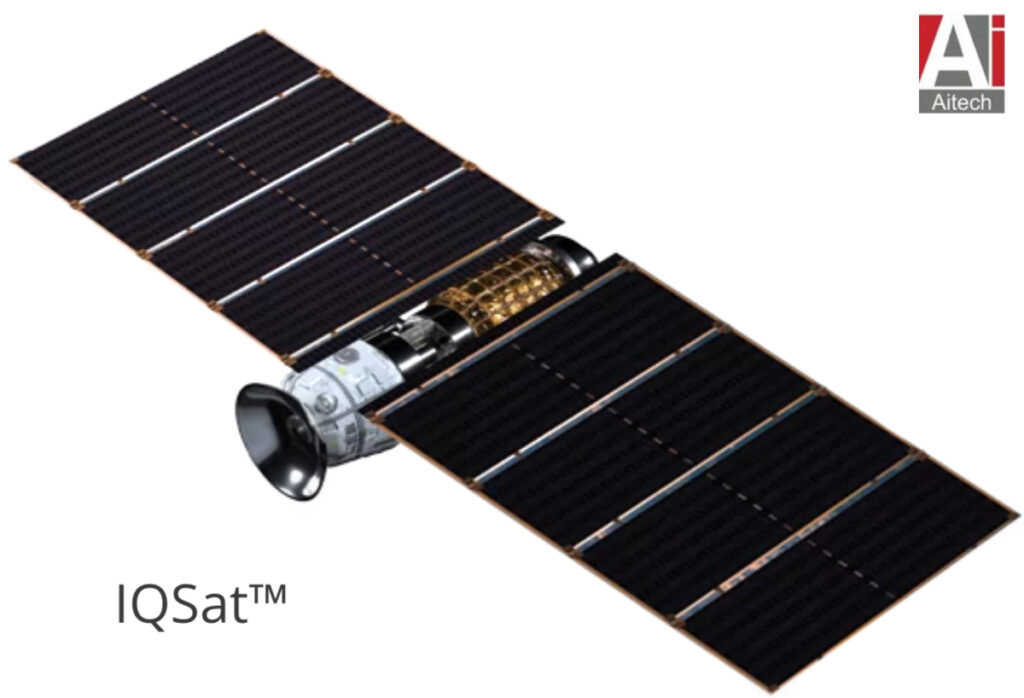
Aitech has introduced the picosatellite (PicoSat) constellation platform, IQSat™. The IQSat is AI-enabled and includes Artificial Intelligence and Machine Learning (AI) ML) from Intuidex, Inc. incorporated in Intuidex’s Watchman for Space™ (W4S™) product for detecting and providing insight on patterns and anomalies for a range of applications, including public safety, agriculture, military, defense, climate, biology and more.

Built on Aitech’s 30 years of electronics legacy and trillions of miles flown in space, the IQSat is small enough to be held in the palm of a hand and can be deployed in a constellation of five to thousands. Offering coverage previously unattainable, IQSat is powerful enough to deliver actionable pattern of life analysis, rapidly and frequently, from any desired point on Earth.
Leveraging Intuidex’s Watchman for Space product, the IQSat offers Higher-Order Low-Resource Learning™ (HO-LRL™) in support of rapid do-it-yourself user-based modeling, detection and tracking, pattern of life and anomaly detection, and constellation operations capabilities that enable new uses across a range of markets:
Military and Defense: With a low probability of intercept and low probability of detection, IQSat can deliver critical information on threat locations, directions and velocities in any area of interest at tactically significant update rates directly to the warfighter
Space Situational Awareness: With flexible sensor options and constellation configurations, IQSat brings low-cost capability to detect space debris to prevent space collisions and monitor orbital traffic, as well as detect changes in satellite trajectories or potential anti-satellite threats
Space Habitat: Placed in the vicinity of Space Habitats, IQSat can deliver temperature, radiation levels and other data variables to evaluate structure integrity by detecting micro-meteorite impacts and material degradation or external surveillance to detect space debris collision threats
Public Safety: A low-cost LEO constellation of IQSats can provide rapid detection of remote areas to identify natural disasters such as floods and fires; assist in remote search and rescue operations through detection of objects, locations and movement directly to the rescuer; or monitor infrastructure surveillance of dams, bridges and other structures
Agriculture: IQSat can assist farmers by delivering fast and frequent insight on soil, crops, disease, weather and other critical variables to help improve crop output
Science and Research: A constellation of IQSats can provide researchers and scientists with a low-cost solution for tracking unique weather patterns, monitoring wildlife migrations around the world, tracking ocean currents and wildlife and many more capabilities
The IQSat provides mission flexibility for quick and cost-effective constellation design, reducing delivery time and cost of custom sensing satellites and constellation configurations.
Leveraging Watchman for Space, the IQSat platform dynamically updates its incident, event, object or threat detection priorities to meet ever-changing mission needs through uplinked software and configuration driven by users. Additionally, IQSat offers the industry’s first common payload interface designed to host multiple payloads on a single flexible electrical and mechanical interface, allowing for quick and standardized designs to reduce cost, NRE and time to launch.
The IQSat platform will be available in Q4 2025 for mission development and ready for LEO flight in Q1 2026. Based on mission needs, the IQSat offers:
- Small size and ruggedized, standardized design for low-cost access to space
- Rapid development and deployment to create constellations in months
- Flexible sensor options to meet a range of mission needs
- The latest relevant information from areas of interest in minutes, with a constellation of thousands, frequent revisit rates and human-in-the-loop management in Watchman for Space
- High accuracy pattern of life and anomaly detection of incidents, events and items of interest through on-board AI/ML processing capabilities using HO-LRL
- Low uplink and downlink bandwidth utilization for rapid delivery of critical information directly to the point of need
Space-based infrastructure solves big problems and fuels big advancements on Earth. The new IQSat platform is integral to space accessibility by delivering low cost, rapid deployment constellations that provide access to actionable information quickly and frequently for infinite applications,” said Pratish Shah, U.S. general manager, Aitech. “Whether used for military and defense, environmental or agricultural applications, communications or scientific research, the flexibility, cost and availability of a solution like IQSat has not existed before – providing more accessibility to the power of space.”
==> Aitech is showcasing the new IQSat PicoSat constellation platform at the Space Symposium in Colorado Springs, Colorado, in booth #612 from April 7-10.
